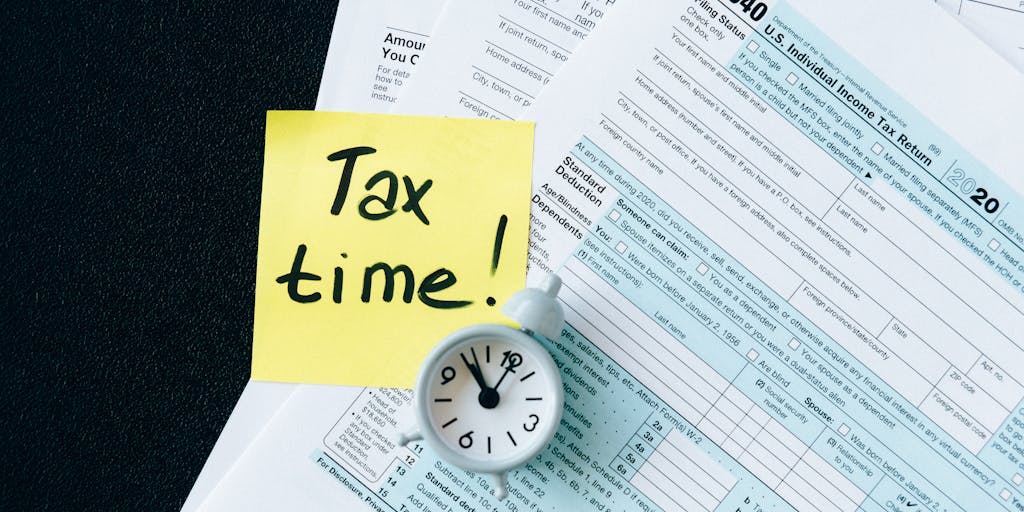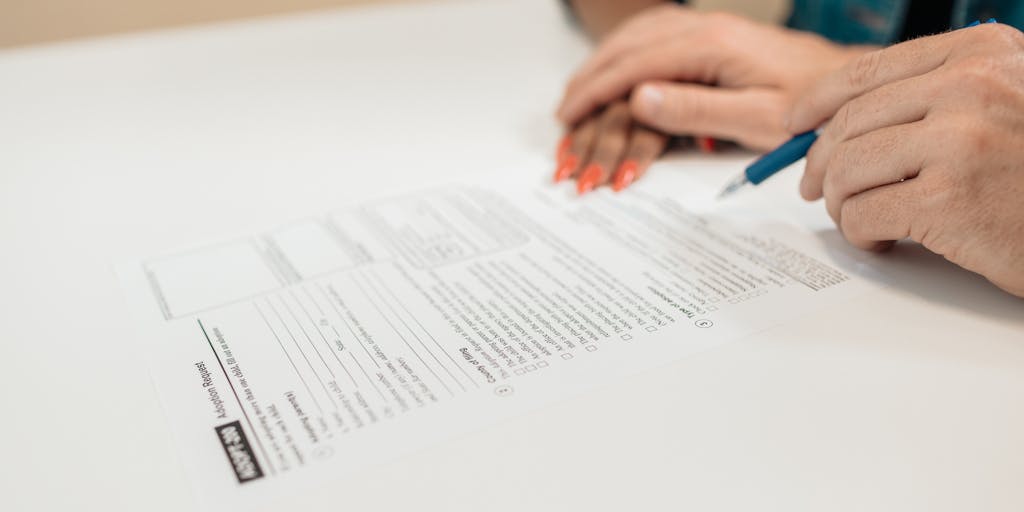Child support is a topic that often stirs up strong emotions and complex situations. If you’re a parent, you might find yourself wondering: what happens if I can’t pay? Or, can I really go to jail for not meeting my obligations? These questions are not just legal inquiries; they touch on the very essence of responsibility, family dynamics, and the welfare of children. Let’s dive into this intricate subject together.
Understanding Child Support in NY

In New York, child support is designed to ensure that children receive the financial support they need from both parents, regardless of their living arrangements. The state has established guidelines that determine how much support a non-custodial parent should pay, based on their income and the number of children involved. But what does this look like in practice?
For instance, if you’re a non-custodial parent earning $50,000 a year and have one child, you might be expected to pay around 17% of your income, which translates to about $8,500 annually. This amount is intended to cover essential expenses like food, clothing, and education. However, life can throw curveballs—job loss, medical emergencies, or other financial hardships can make these payments challenging.
It’s crucial to understand that child support is not just a legal obligation; it’s a commitment to your child’s well-being. According to a study by the U.S. Census Bureau, children who receive consistent child support are more likely to have better educational outcomes and overall stability. This underscores the importance of fulfilling these obligations, even when times are tough.
State Laws: Can You Go To Jail for Not Paying Child Support?

The short answer is yes, you can go to jail for not paying child support, but it’s not as straightforward as it may seem. Each state has its own laws regarding child support enforcement, and New York is no exception. If a parent fails to pay child support, the court may take various actions, including wage garnishment, tax refund interception, and even jail time in extreme cases.
But let’s unpack this a bit. Jail time is typically reserved for cases where a parent willfully refuses to pay child support despite having the means to do so. For example, if a parent is deliberately hiding income or assets to avoid payments, the court may view this as contempt of court. In such situations, a judge might impose penalties, including incarceration, to compel compliance.
However, if you find yourself unable to pay due to genuine financial hardship, it’s essential to communicate with the court. Many parents are unaware that they can request a modification of their child support order based on changes in their financial situation. A study from the American Bar Association highlights that proactive communication can often prevent severe consequences, including jail time.
So, what should you do if you’re struggling to make payments? Here are some steps to consider:
- Document Your Financial Situation: Keep records of your income, expenses, and any changes in your financial status.
- Communicate with the Other Parent: If possible, discuss your situation with the custodial parent. They may be more understanding than you expect.
- File for a Modification: Approach the court to request a modification of your child support order. Be prepared to present your documentation.
- Seek Legal Advice: Consulting with a family law attorney can provide you with guidance tailored to your specific situation.
In conclusion, while the fear of jail time for not paying child support is real, it’s essential to remember that the legal system often seeks to understand the circumstances behind non-payment. By taking proactive steps and maintaining open lines of communication, you can navigate this challenging landscape with greater confidence and clarity.
When Does Past-Due Child Support Become a Crime?
Have you ever found yourself wondering about the consequences of not paying child support? It’s a heavy topic, and one that can feel overwhelming. The truth is, while missing a payment might not seem like a big deal at first, there are serious legal implications that can arise if the situation escalates. So, when does past-due child support cross the line into criminal territory?
Generally, child support becomes a criminal issue when a parent willfully fails to pay what they owe. This means that if you have the ability to pay but choose not to, you could face legal repercussions. The law looks at your financial situation, your payment history, and your overall commitment to supporting your child. For instance, if you lost your job and genuinely cannot afford to pay, courts may be more lenient. However, if you have the means but simply refuse to contribute, you could be charged with contempt of court or even face criminal charges in some jurisdictions.
According to a report from the U.S. Department of Health and Human Services, about 70% of parents who owe child support are employed, which raises questions about their commitment to fulfilling their obligations. This statistic highlights the importance of understanding that child support is not just a financial obligation; it’s a legal one that can lead to serious consequences if ignored.
Child Support Arrears and Jail Time: State Law Examples
As we dive deeper into the topic, it’s essential to recognize that laws regarding child support arrears vary significantly from state to state. This means that what might be a minor issue in one state could lead to jail time in another. Let’s explore a few examples to illustrate how different states handle child support arrears and the potential for jail time.
1. Idaho
In Idaho, the law takes child support seriously. If a parent fails to pay child support and accumulates arrears, they can face severe consequences. The state has mechanisms in place to enforce child support orders, including wage garnishment and tax refund intercepts. However, if a parent continues to ignore these obligations, they could be held in contempt of court.
In Idaho, contempt of court can lead to jail time, especially if the court determines that the non-paying parent has the ability to pay but is willfully avoiding their responsibilities. For example, a case in 2019 highlighted a father who was sentenced to jail for failing to pay over $30,000 in child support. The court found that he had the means to pay but chose not to, which ultimately led to his incarceration.
This situation serves as a stark reminder that child support is not just a suggestion; it’s a legal requirement. If you find yourself in a similar situation, it’s crucial to communicate with the court and seek modifications if your financial circumstances change. Ignoring the problem will only make it worse.
2. Michigan
In Michigan, the issue of child support is taken very seriously, and the state has established strict guidelines to ensure that children receive the financial support they need. If you find yourself unable to pay child support, it’s crucial to understand the potential consequences. In Michigan, failing to pay child support can lead to a variety of legal repercussions, including the possibility of jail time.
According to the Michigan Child Support Enforcement Program, the state has the authority to enforce child support orders through various means, including wage garnishment, tax refund interception, and even license suspensions. But what happens if these measures don’t compel you to pay? The state can initiate a process known as “contempt of court,” which can result in jail time if the court finds that you willfully failed to pay.
For instance, a case in Michigan highlighted a father who was sentenced to 30 days in jail for not paying over $10,000 in child support. The judge emphasized that the decision was made not just to punish, but to encourage compliance with the support order. This illustrates the state’s commitment to ensuring that children are supported, while also providing a clear message to non-compliant parents.
It’s important to note that if you’re facing financial difficulties, Michigan law allows for modifications to child support orders. You can petition the court to lower your payments based on your current financial situation. This proactive approach can help you avoid the severe consequences of non-payment.
3. Minnesota
In Minnesota, the landscape of child support enforcement is similarly stringent. The state operates under the principle that both parents are responsible for supporting their children, regardless of their relationship status. If you’re unable to meet your child support obligations, you might be wondering: can you really go to jail for it?
The answer is yes, but it’s not as straightforward as it may seem. Minnesota courts can hold parents in contempt for failing to pay child support, which can lead to jail time. However, the court typically considers the circumstances surrounding the non-payment. For example, if you lost your job or faced unexpected medical expenses, the court may be more lenient.
A notable case involved a mother who was sentenced to 90 days in jail for failing to pay child support. The judge noted that while the mother had legitimate financial struggles, she had also made no effort to communicate with the court or seek a modification of her support order. This highlights the importance of staying engaged with the legal process and seeking help when needed.
In Minnesota, if you find yourself in a situation where you cannot pay, it’s essential to act quickly. You can file a motion to modify your child support order, which can prevent the court from taking drastic measures against you. Remember, communication is key, and the courts are often willing to work with you if you demonstrate a genuine effort to fulfill your responsibilities.
4. North Carolina
When it comes to child support in North Carolina, the stakes can be high. The state has a robust enforcement system designed to ensure that children receive the financial support they deserve. If you’re struggling to make your child support payments, you might be anxious about the potential for jail time. So, what does the law say?
In North Carolina, failing to pay child support can indeed lead to jail time, particularly if the court finds that you are willfully disobeying a support order. The state employs various enforcement mechanisms, including wage garnishment and the suspension of licenses, to encourage compliance. However, if these measures fail, the court can hold you in contempt, which may result in incarceration.
For example, a father in North Carolina was sentenced to 60 days in jail after accruing over $15,000 in unpaid child support. The judge emphasized that the decision was made to uphold the integrity of the child support system and to ensure that the child’s needs were met. This case serves as a stark reminder of the serious consequences of non-payment.
However, it’s worth noting that North Carolina law does allow for modifications to child support orders. If you’re facing financial hardship, it’s crucial to reach out to the court and request a modification. By doing so, you can avoid the severe penalties associated with non-payment and demonstrate your commitment to supporting your child.
5. Texas
When we think about child support, it often conjures up images of courtroom battles and financial struggles. But in Texas, the stakes can be even higher. If you’re a parent navigating the complexities of child support, you might wonder: what happens if you can’t pay? In the Lone Star State, the consequences can be severe, and understanding the legal landscape is crucial.
In Texas, child support is not just a financial obligation; it’s a legal one. The state takes unpaid child support seriously, and the repercussions can lead to jail time. However, it’s essential to recognize that the legal system typically views incarceration as a last resort. Courts prefer to explore other avenues before resorting to jail, such as payment plans or wage garnishments.
For instance, if a parent is struggling to make payments due to job loss or medical issues, they can petition the court for a modification of their child support order. This proactive approach can help avoid the dire consequences of non-payment. It’s a reminder that communication with the court and the other parent is key. Have you ever found yourself in a situation where you felt overwhelmed by financial obligations? It’s a common struggle, and knowing your options can make a world of difference.
Jail Time for Unpaid Child Support

Imagine the weight of knowing that failing to meet your child support obligations could lead to jail time. It’s a daunting thought, but it’s a reality for many parents. In Texas, if a parent is found to be willfully failing to pay child support, they can face serious legal consequences, including incarceration. The law is designed to ensure that children receive the financial support they need, but it also aims to hold parents accountable.
According to the Texas Attorney General’s Office, the state has various enforcement mechanisms in place to collect unpaid child support. These can include wage garnishment, tax refund interception, and even suspension of professional licenses. However, if these measures fail and the parent continues to neglect their obligations, the court may issue a contempt of court order, which can lead to jail time.
It’s important to note that the court must establish that the parent has the ability to pay but is choosing not to. This is where the concept of “willful non-payment” comes into play. For example, if a parent is deliberately avoiding payments despite having a stable income, they may find themselves facing jail time. On the other hand, if a parent is genuinely unable to pay due to circumstances beyond their control, the court may be more lenient.
Sentencing a deadbeat parent to jail for unpaid child support is usually a court’s last resort.
In the eyes of the law, the goal is not to punish but to ensure that children are supported. Courts often prefer to explore alternatives before resorting to jail time. For instance, many judges will first consider options like community service or payment plans. This approach not only helps the parent avoid jail but also emphasizes the importance of fulfilling their responsibilities.
Moreover, the emotional toll of incarceration can be significant, not just for the parent but for the children involved. Imagine a child who is already facing the challenges of a broken home, only to have a parent taken away due to financial struggles. It’s a heartbreaking scenario that underscores the importance of finding solutions that prioritize the well-being of the child.
In conclusion, while the threat of jail time for unpaid child support is real in Texas, it’s essential to remember that the legal system often seeks to find a balance. If you or someone you know is facing challenges with child support, reaching out for legal advice and exploring options can be a vital step. After all, we all want what’s best for our children, and understanding the law can help us navigate these difficult waters more effectively.
How a Child Support Order Is Enforced
When we think about child support, it’s easy to imagine a simple transaction: one parent pays the other to help support their child. However, the reality is often more complex, especially when payments are missed. So, how exactly is a child support order enforced? Understanding this process can help clarify the potential consequences of non-payment.
Child support orders are typically established by a court, and they carry the weight of legal authority. When a parent fails to make payments, the receiving parent can take action to enforce the order. This enforcement can involve several mechanisms, including wage garnishment, tax refund interception, and even the suspension of licenses. For instance, if you’ve ever heard of someone losing their driver’s license due to unpaid child support, that’s a direct result of enforcement measures in action.
According to the U.S. Census Bureau, about 30% of custodial parents receive the full amount of child support owed to them. This statistic highlights the importance of enforcement mechanisms, as many parents rely on these funds to provide for their children. If you find yourself in a situation where you’re struggling to make payments, it’s crucial to communicate with the other parent and the court. Ignoring the issue can lead to more severe consequences.
Contempt of Court
One of the most serious consequences of failing to pay child support is being held in contempt of court. But what does that really mean? Essentially, contempt of court is a legal finding that someone has disobeyed a court order. In the context of child support, this can happen when a parent fails to make payments as ordered.
Being found in contempt can lead to various penalties, including fines, wage garnishment, or even jail time in extreme cases. It’s a situation that no one wants to find themselves in, but it’s important to understand that the court’s primary goal is to ensure that children receive the support they need. If you’re facing this situation, it’s wise to seek legal advice to explore your options and understand your rights.
Civil vs. Criminal Contempt of Court for Failure to Pay Child Support
When it comes to contempt of court related to child support, it’s essential to distinguish between civil and criminal contempt. This distinction can significantly impact the consequences you may face.
Civil contempt is typically used to compel a parent to comply with a court order. The idea here is not to punish but to encourage compliance. For example, if you’re behind on payments, the court may order you to pay a certain amount by a specific date. If you fail to do so, you could be held in civil contempt, which might result in fines or even jail time until you comply with the order.
On the other hand, criminal contempt is more punitive in nature. It’s used when a parent willfully disobeys a court order, and the intent is to punish the offender. This could lead to more severe penalties, including longer jail sentences. Courts often reserve criminal contempt for cases where there is a clear pattern of non-payment and disregard for the court’s authority.
Understanding these distinctions can help you navigate the complexities of child support enforcement. If you’re struggling to meet your obligations, it’s crucial to address the issue proactively. Seeking modifications to your child support order or discussing your situation with a legal professional can help you avoid the pitfalls of contempt and ensure that you’re doing your best for your child.
How Long Is a Jail Sentence for Failure to Pay Child Support?
When we think about the consequences of not paying child support, the idea of jail time often looms large. But how long could you actually end up behind bars for this? The answer isn’t straightforward, as it varies significantly based on several factors, including the state you live in, the amount owed, and your overall financial situation.
In many states, failure to pay child support can lead to a misdemeanor charge, which might result in a jail sentence of up to six months. However, if the situation is deemed more severe, such as willful neglect or repeated offenses, it can escalate to a felony charge, potentially leading to a year or more in prison. For instance, in Texas, a parent can face up to six months in jail for a misdemeanor, while a felony charge could result in two to ten years, depending on the circumstances.
It’s essential to understand that judges often consider the intent behind the non-payment. If you genuinely cannot pay due to job loss or medical issues, the court may be more lenient. On the other hand, if it appears that you are deliberately avoiding your responsibilities, the consequences can be much harsher. This is where the importance of communication with the court comes into play—keeping them informed about your situation can sometimes prevent severe penalties.
Federal Prosecution of Deadbeat Parents
Did you know that child support enforcement isn’t just a state issue? The federal government also takes a keen interest in ensuring that parents fulfill their financial obligations. Under the Child Support Enforcement Act, the federal government can step in when state efforts to collect child support fail. This can lead to serious consequences, including federal prosecution.
For example, if a parent crosses state lines to avoid paying child support, they can be charged with a federal crime. The penalties for such actions can be severe, including hefty fines and imprisonment for up to two years. The federal government has made it clear that they will not tolerate parents who evade their responsibilities, and they have the tools to track down those who try to escape their obligations.
In recent years, there have been numerous high-profile cases where parents were prosecuted for failing to pay child support. These cases often serve as a stark reminder that the law is serious about ensuring that children receive the financial support they need. If you find yourself in a situation where you are struggling to make payments, it’s crucial to seek legal advice and explore options rather than risking federal prosecution.
How to Avoid Jail for Unpaid Child Support

Facing the possibility of jail time for unpaid child support can be incredibly stressful. But the good news is that there are proactive steps you can take to avoid this fate. Let’s explore some practical strategies that can help you navigate this challenging situation.
- Communicate with the Court: If you’re struggling to make payments, don’t wait until you’re in trouble. Reach out to the court to explain your situation. They may be able to adjust your payment plan based on your current financial circumstances.
- Document Your Financial Situation: Keep detailed records of your income, expenses, and any changes in your financial status. This documentation can be invaluable if you need to present your case to the court.
- Seek Legal Assistance: Consulting with a family law attorney can provide you with guidance tailored to your specific situation. They can help you understand your rights and options, potentially negotiating a more manageable payment plan.
- Consider Mediation: If communication with your co-parent is strained, mediation can be a helpful way to reach an agreement on child support payments. A neutral third party can facilitate discussions and help both parties come to a resolution.
- Stay Informed: Laws regarding child support can change, so it’s essential to stay informed about your rights and responsibilities. Regularly check in with local resources or legal professionals to ensure you’re up to date.
Ultimately, the key to avoiding jail for unpaid child support lies in taking action. By being proactive and transparent about your situation, you can often find a way to meet your obligations without facing severe penalties. Remember, you’re not alone in this journey, and there are resources available to help you navigate these challenging waters.
Concerned About Unpaid Child Support? You Have Options
If you find yourself in a situation where child support payments are becoming a burden, it’s natural to feel overwhelmed. You might be asking yourself, “What are my options?” The good news is that there are several avenues you can explore to address unpaid child support without facing dire consequences.
First, it’s essential to communicate openly with your ex-partner. Sometimes, a simple conversation can lead to a mutual understanding or even a temporary adjustment in payment terms. If that doesn’t work, consider seeking legal advice. Family law attorneys can provide guidance tailored to your specific situation, helping you navigate the complexities of child support laws.
Additionally, many states offer programs that can assist parents struggling to make payments. For instance, some jurisdictions allow for modifications based on changes in income or financial hardship. According to a study by the U.S. Census Bureau, nearly 30% of parents who owe child support have experienced a significant change in their financial situation, which can be grounds for modification.
Moreover, if you’re facing job loss or medical issues, documenting these changes can be crucial. Courts are often sympathetic to genuine hardships, and presenting your case with clear evidence can lead to a more favorable outcome. Remember, you’re not alone in this; many parents face similar challenges, and there are resources available to help you through tough times.
Men Held at Rikers Island for Non-payment of Child Support
It’s a stark reality that many men find themselves incarcerated for non-payment of child support, with Rikers Island being a notable example. Imagine being separated from your family, not because of a crime, but due to financial struggles. This situation is more common than you might think. In New York City, thousands of parents have faced jail time for failing to meet their child support obligations.
According to a report from the New York City Department of Correction, over 1,000 individuals were held at Rikers Island for child support-related offenses in a single year. This statistic raises important questions about the effectiveness of punitive measures versus supportive solutions. Experts argue that incarceration often exacerbates the problem, making it even harder for parents to fulfill their obligations once released.
Dr. Elizabeth M. McClintock, a sociologist who studies family law, emphasizes that “jailing parents for unpaid child support can create a cycle of poverty and instability.” Instead of helping parents find stable employment, incarceration can lead to job loss and further financial strain. This cycle not only affects the parents but also the children who rely on that support.
So, what can be done? Advocates suggest that reforming the system to focus on rehabilitation rather than punishment could lead to better outcomes for families. Programs that offer job training and financial counseling can empower parents to meet their obligations without the threat of jail time hanging over their heads.
Could You Go to Jail for Not Paying Child Support in Long Island, NY?
If you’re living in Long Island and are worried about the possibility of jail time for unpaid child support, you’re not alone in your concerns. The legal landscape surrounding child support can be daunting, and understanding the potential consequences is crucial for any parent.
In New York, failing to pay child support can indeed lead to serious repercussions, including jail time. However, it’s important to note that incarceration is typically a last resort. Courts generally prefer to explore other options first, such as wage garnishment or payment plans. According to the New York State Office of Child Support Services, only a small percentage of cases result in jail time, often reserved for those who willfully refuse to pay despite having the means to do so.
For instance, if you’ve lost your job or are facing financial hardship, it’s vital to communicate this to the court. You can file a petition for modification of your child support order, which can help alleviate the pressure. A study by the National Conference of State Legislatures found that nearly 70% of parents who sought modifications were successful in reducing their payments based on legitimate financial changes.
Ultimately, the key takeaway is that while the threat of jail time exists, there are proactive steps you can take to avoid such outcomes. By staying informed, seeking legal advice, and maintaining open lines of communication with your ex-partner, you can navigate the complexities of child support with greater confidence and peace of mind.
What Can Long Island, NY Courts Do to Child Support Delinquents?
Imagine a parent who, despite their best intentions, finds themselves unable to keep up with child support payments. Life can throw unexpected challenges our way—job loss, medical emergencies, or even a global pandemic. But what happens when those missed payments accumulate? In Long Island, NY, the courts have a range of tools at their disposal to address child support delinquents, and understanding these can be crucial for both custodial and non-custodial parents.
First and foremost, the court can issue a judgment against the delinquent parent, which can lead to wage garnishment. This means that a portion of their paycheck is automatically deducted to cover the owed child support. According to the New York State Child Support Program, wage garnishment is one of the most effective methods for ensuring that children receive the financial support they need.
Additionally, the court may impose interest charges on overdue payments, which can accumulate quickly, making the total amount owed even more daunting. For instance, if a parent owes $10,000 in back support, the interest can add thousands more to that burden over time.
In more severe cases, the court can take the step of suspending the delinquent parent’s driver’s license or even professional licenses, which can significantly impact their ability to earn a living. This is not just a punitive measure; it’s designed to encourage compliance with child support obligations. A study by the U.S. Department of Health and Human Services found that license suspensions can lead to increased payments, as parents are motivated to resolve their debts to regain their driving privileges.
Finally, if all else fails, the court can hold the delinquent parent in contempt of court, which can lead to jail time. While this is often seen as a last resort, it underscores the seriousness of child support obligations. The goal is not to punish but to ensure that children receive the support they need to thrive.
Citizen’s Guide To U.S. Federal Law On Child Support Enforcement
Understanding child support enforcement can feel like navigating a maze, especially when federal laws come into play. So, what do you need to know? The federal government has established a framework to ensure that child support is collected and distributed fairly across the states. The Child Support Enforcement (CSE) program, established under Title IV-D of the Social Security Act, is designed to assist custodial parents in obtaining financial support for their children.
One of the key components of this program is the National Directory of New Hires, which helps locate parents who owe child support. Employers are required to report new hires to this directory, allowing states to track down non-custodial parents who may be avoiding their obligations. This is a powerful tool, as it helps ensure that parents are held accountable, regardless of where they live or work.
Moreover, the federal government provides states with incentives to improve their child support collection rates. For example, states that successfully collect overdue payments can receive additional funding, which encourages them to prioritize enforcement efforts. This creates a system where both state and federal interests align in ensuring that children receive the support they deserve.
However, it’s important to note that while federal laws set the groundwork, each state has its own specific regulations and procedures. This means that if you’re navigating child support issues, it’s crucial to understand the laws in your state, as they can vary significantly. Consulting with a family law attorney can provide clarity and guidance tailored to your situation.
Why does it make sense to jail someone behind on child support?
It might seem harsh to consider jail time for someone who is struggling to pay child support, but let’s take a moment to unpack this. The underlying principle is that child support is not just a financial obligation; it’s a commitment to the well-being of a child. When a parent fails to meet this obligation, it can have serious repercussions for the child’s quality of life.
Jailing a parent for non-payment is often viewed as a last resort, but it serves a critical purpose. It sends a strong message that child support is taken seriously and that there are consequences for failing to provide for one’s children. According to a report from the U.S. Census Bureau, nearly 30% of custodial parents do not receive the full amount of child support owed to them. This statistic highlights the need for effective enforcement mechanisms.
Moreover, the threat of jail time can act as a deterrent. When parents know that there are serious consequences for non-payment, they may be more inclined to seek employment or find ways to meet their obligations. A study published in the Journal of Family Issues found that states with stricter enforcement measures, including the possibility of jail time, saw higher rates of compliance among non-custodial parents.
However, it’s essential to approach this issue with empathy. Many parents who fall behind on payments are not doing so out of malice; they may be facing financial hardships that make it difficult to keep up. This is why some courts are exploring alternatives to incarceration, such as payment plans or community service, which can provide a more constructive path forward while still holding parents accountable.
Ultimately, the goal is to ensure that children receive the support they need while also recognizing the complexities of each individual situation. By fostering a system that balances accountability with compassion, we can work towards a solution that benefits everyone involved.
How often do mothers actually go to jail for not paying child support?
When we think about child support, the image that often comes to mind is that of fathers facing legal consequences for failing to meet their obligations. However, it’s essential to recognize that mothers can also face jail time for not paying child support. In fact, the statistics reveal a more nuanced picture. According to a report from the U.S. Census Bureau, about 30% of custodial parents are fathers, and many of them are owed child support. This means that mothers can indeed find themselves in legal trouble for non-payment, although the frequency is less documented.
In many states, the enforcement of child support laws can lead to jail time for both parents, regardless of gender. A study published in the Journal of Family Issues found that while men are more frequently incarcerated for non-payment, women are not exempt. The reasons for this disparity often stem from societal perceptions and biases regarding gender roles in parenting. However, the law treats both parents equally when it comes to fulfilling their financial responsibilities.
It’s important to note that jail time is typically a last resort. Courts often prefer to explore other avenues, such as wage garnishment or payment plans, before resorting to incarceration. But if a parent willfully neglects their obligation, the consequences can be severe. So, while it may not be as common for mothers to go to jail for non-payment, it is certainly possible, and the legal system is designed to hold all parents accountable.
A dad reported he is going to jail for two months, because he is ordered to pay a large sum in child support monthly, but is unemployed, and he is unable to pay.
This situation is a heartbreaking reality for many parents. Imagine being in a position where you want to provide for your child, but circumstances beyond your control—like unemployment—make it nearly impossible. This father’s story is not unique; it reflects a growing concern among many who find themselves trapped in a cycle of financial instability and legal repercussions.
According to the U.S. Department of Health and Human Services, nearly 25% of non-custodial parents are unemployed. When a court orders a specific child support amount, it often does not take into account the parent’s current financial situation. This can lead to a scenario where a parent is penalized for being unable to pay, despite their best efforts. In this case, the father’s impending two-month jail sentence raises critical questions about the fairness of the system. Is it just to imprison someone who is actively seeking work but cannot find it?
Experts suggest that courts should consider a parent’s ability to pay when setting child support amounts. A study from the American Bar Association emphasizes the need for more flexible arrangements that account for changes in employment status. This could include temporary reductions in payments or alternative solutions that prioritize the well-being of the child without resorting to incarceration. After all, the ultimate goal of child support is to ensure that children are provided for, not to punish parents who are struggling.
My dad hasn’t paid child support my whole life. (14 years)
Living with the knowledge that a parent has not fulfilled their child support obligations can be a heavy burden. For many children, like the one sharing this experience, the absence of financial support can lead to feelings of abandonment and resentment. It’s not just about the money; it’s about the emotional impact of a parent’s choices. Over 14 years, the lack of support can create a ripple effect, influencing everything from educational opportunities to self-esteem.
In cases like this, it’s crucial to understand the broader implications of non-payment. According to a report from the National Child Support Enforcement Association, children who receive consistent child support are more likely to succeed academically and socially. The absence of this support can hinder a child’s development and create a sense of instability in their lives.
Moreover, the emotional toll can be profound. Many children in similar situations report feelings of anger and confusion, questioning why their parent chose not to contribute. It’s a complex emotional landscape that can lead to long-lasting effects on relationships and mental health. As we navigate these conversations, it’s essential to approach them with empathy and understanding, recognizing that every family’s situation is unique.
Ultimately, the journey of dealing with a non-paying parent is fraught with challenges, but it’s also an opportunity for growth and resilience. Seeking support from trusted friends, family, or professionals can help in processing these feelings and finding a path forward. Remember, you are not alone in this experience, and there are resources available to help you navigate the complexities of family dynamics.
Who am I really paying child support to?
When you think about child support, it’s easy to focus on the financial aspect—after all, it’s a significant commitment. But have you ever paused to consider the deeper implications of who benefits from these payments? Child support is designed to ensure that children receive the financial support they need to thrive, regardless of their parents’ relationship status. But the question of “who” can sometimes feel murky.
In most cases, child support payments go directly to the custodial parent, who is responsible for the day-to-day care of the child. This parent uses the funds to cover essential expenses such as food, clothing, education, and healthcare. However, it’s important to recognize that the ultimate beneficiary is the child. According to a study by the U.S. Census Bureau, children living in single-parent households are more likely to experience economic hardship, making these payments crucial for their well-being.
Moreover, child support can also be directed to third parties, such as childcare providers or educational institutions, if the custodial parent designates it. This ensures that the funds are used specifically for the child’s needs. Understanding this flow of money can help you appreciate the importance of fulfilling your child support obligations—not just as a legal requirement, but as a moral one.
Someone reached out to my husband threatening to take him to court for child support for a child he didn’t know existed.
Imagine the shock and confusion that can arise when you receive a message like this. It’s a scenario that many people find themselves in, and it raises a host of questions about responsibility, legality, and emotional impact. If your husband is facing a situation where someone claims he owes child support for a child he didn’t know existed, it’s essential to approach this matter with both caution and clarity.
First, it’s crucial to understand that child support obligations can arise from various circumstances, including paternity claims. If a child is born during a marriage, the husband is typically presumed to be the father, even if he is unaware of the child’s existence. In such cases, the law often requires him to provide support, regardless of his knowledge. This can feel incredibly unfair, but it’s a reality many face.
In this situation, it’s advisable for your husband to seek legal counsel. An attorney can help him navigate the complexities of family law, including establishing paternity and understanding his rights and responsibilities. Additionally, he may want to consider requesting a DNA test to confirm paternity before any legal obligations are established. This step can provide clarity and potentially alleviate some of the emotional burden associated with unexpected claims.
Ultimately, communication is key. If your husband is open and honest about the situation, it can help mitigate misunderstandings and foster a more constructive dialogue with the other party involved.
Can one simply not collect child support?
It’s a common misconception that child support is optional or that one can simply choose not to collect it. The reality is much more complex. Child support is a legal obligation designed to ensure that children receive the financial support they need from both parents, regardless of their living arrangements. But what happens if the custodial parent decides not to pursue these payments?
In some cases, a custodial parent may feel that collecting child support is unnecessary or may wish to avoid conflict with the non-custodial parent. However, it’s important to recognize that for many families, child support is a vital source of income. According to the Office of Child Support Enforcement, nearly 13 million custodial parents receive child support, which can significantly impact their financial stability.
Choosing not to collect child support can also have long-term implications. For instance, if the custodial parent later decides they need the support, they may find it challenging to retroactively claim payments. Additionally, not pursuing child support can affect the child’s perception of their worth and the importance of financial responsibility.
Ultimately, while it is possible for a custodial parent to forgo collecting child support, it’s essential to weigh the potential consequences carefully. Open communication with the non-custodial parent about financial responsibilities can lead to a more amicable arrangement that benefits everyone involved, especially the child.
Received a child support civil summons when I am not the father
Imagine opening your mailbox to find a civil summons regarding child support, only to realize that you’re not even the father of the child in question. It’s a situation that can feel surreal and overwhelming, leaving you with a whirlwind of emotions and questions. How did this happen? What are your rights? And most importantly, what should you do next?
First, it’s crucial to understand that a child support summons can be issued based on various circumstances, including mistaken identity or clerical errors. According to the U.S. Census Bureau, about 30% of child support cases involve disputes over paternity. If you find yourself in this predicament, the first step is to gather any documentation that supports your claim of non-paternity. This could include DNA test results or any legal documents that clarify your relationship to the child.
Next, you should respond to the summons promptly. Ignoring it can lead to a default judgment against you, which could result in wage garnishment or other legal repercussions. Consulting with a family law attorney can provide you with the guidance you need to navigate this complex situation. They can help you file a motion to contest the paternity claim and represent your interests in court.
It’s also worth noting that many states have laws that allow individuals to challenge paternity claims, especially if they can prove that they are not the biological father. For instance, in California, the law allows for a “paternity judgment” to be set aside if new evidence arises. This means that you have a fighting chance to clear your name and avoid the financial burden of child support.
Ultimately, while receiving a child support summons can be distressing, it’s essential to take proactive steps to protect your rights. Remember, you’re not alone in this; many have faced similar challenges, and with the right support, you can navigate through it.
My children are living with me, but I have to pay child support to the other parent.
Have you ever found yourself in a situation where your children are living with you, yet you’re still required to pay child support to the other parent? It’s a perplexing scenario that can leave you feeling frustrated and confused. You might wonder, “How is this fair?” or “Why am I still paying when I’m the one providing for them?”
In many cases, child support is determined based on the income of both parents and the custody arrangement. Even if your children are primarily living with you, the original child support order may still be in effect unless modified by the court. This is where understanding the legal framework becomes essential.
According to the American Academy of Matrimonial Lawyers, child support is intended to ensure that both parents contribute to the financial needs of their children, regardless of where they live. However, if circumstances change—like a shift in custody—you have the right to request a modification of the child support order. This process typically involves filing a motion with the court and providing evidence of the change in living arrangements.
It’s also important to communicate with the other parent. Sometimes, a mutual agreement can be reached without going through the court system. For example, if both parents agree that the child support payments should be adjusted due to the change in custody, they can submit a stipulation to the court for approval.
Ultimately, while it may feel unjust to pay child support when your children are living with you, there are legal avenues available to address this issue. By staying informed and proactive, you can work towards a resolution that reflects your current situation.
Child support mandated by the state. WTF DO WE DO?
When you receive a notice that child support has been mandated by the state, it can feel like a punch to the gut. You might be asking yourself, “What just happened?” and “What do I do now?” It’s a common reaction, and you’re not alone in feeling overwhelmed by the complexities of the child support system.
Child support is often mandated by the state to ensure that children receive the financial support they need, regardless of the parents’ relationship status. However, the process can sometimes feel impersonal and bureaucratic, leaving parents feeling powerless. According to a report from the Office of Child Support Enforcement, nearly 70% of custodial parents receive some form of child support, but many still struggle to navigate the system.
So, what can you do if you find yourself in this situation? First, it’s essential to understand the basis of the child support order. Review the documentation carefully to see how the amount was calculated. States typically use guidelines that consider both parents’ incomes, the number of children, and the needs of the child.
If you believe the amount is unfair or unmanageable, you have the right to request a hearing to contest the order. This process can vary by state, but generally, you’ll need to provide evidence of your financial situation, such as pay stubs, tax returns, and any other relevant documentation. It’s also wise to consult with a family law attorney who can help you navigate the legal landscape and advocate on your behalf.
Additionally, consider reaching out to local support groups or online forums where you can connect with others who have faced similar challenges. Sharing experiences and advice can provide not only practical tips but also emotional support during a stressful time.
In conclusion, while a state-mandated child support order can feel daunting, it’s important to remember that you have options. By staying informed and proactive, you can take control of your situation and work towards a resolution that works for you and your children.
Do parents on disability have to pay child support?
When we think about child support, it’s easy to assume that all parents are in a position to contribute financially, but what happens when a parent is on disability? This is a question that many individuals grapple with, and the answer can be both nuanced and deeply personal.
In general, parents who receive disability benefits are still required to pay child support. However, the amount they are obligated to pay may be adjusted based on their income. For instance, if a parent is receiving Social Security Disability Insurance (SSDI), the benefits can be considered income for child support calculations. This means that while they may not be earning a traditional salary, their disability payments can still contribute to their child’s well-being.
According to a study by the U.S. Census Bureau, about 3.5 million children live with a parent who receives disability benefits. This statistic highlights the importance of understanding how these benefits interact with child support obligations. It’s crucial for parents in this situation to communicate openly with their ex-partners and, if necessary, seek legal advice to ensure that their child support payments are fair and manageable.
Moreover, if a parent’s disability significantly impacts their ability to pay, they can petition the court for a modification of their child support order. Courts typically consider changes in income, including disability status, when determining child support obligations. This process can be daunting, but it’s essential to advocate for what is fair for both the parent and the child.
Ultimately, the goal of child support is to ensure that children receive the financial support they need, regardless of their parents’ circumstances. If you find yourself in this situation, remember that you’re not alone, and there are resources available to help navigate these complex waters.
Should I file for Child Support after being separated for almost 11 years?
It’s been nearly 11 years since you and your partner went your separate ways, and now you’re wondering if it’s time to file for child support. This is a common dilemma, and it’s understandable to feel uncertain about the best course of action. Let’s explore this together.
First, consider the needs of your child. If you’ve been managing without child support, you might wonder if it’s worth the effort to pursue it now. However, it’s important to recognize that child support is not just about financial assistance; it’s about ensuring that your child’s needs are met consistently. Over the years, costs associated with raising a child can add up significantly, and having a formal child support agreement can provide stability.
According to the Office of Child Support Enforcement, children who receive child support tend to fare better in terms of education and overall well-being. This statistic underscores the importance of securing financial support, even after a long separation. Additionally, filing for child support can also help establish a legal record of the other parent’s financial responsibilities.
However, before you take the plunge, it’s wise to consider your relationship with your ex-partner. If you believe that filing for child support could lead to conflict or resentment, weigh the potential emotional impact on both you and your child. It might be beneficial to have an open conversation with your ex about your child’s needs and the possibility of formalizing support.
Ultimately, the decision to file for child support is a personal one, and it’s essential to consider both the financial and emotional aspects. If you decide to move forward, consulting with a family law attorney can provide clarity on the process and help you navigate any complexities that may arise.
How many with shared custody get child support?
Shared custody arrangements can be a beautiful way to ensure that both parents remain actively involved in their child’s life. But when it comes to finances, the question often arises: how many parents in shared custody situations actually receive child support? Let’s delve into this topic together.
Interestingly, the dynamics of shared custody can significantly influence child support payments. According to a report from the U.S. Census Bureau, approximately 50% of custodial parents receive child support, but this number can vary widely depending on the custody arrangement. In shared custody situations, where both parents have significant time with the child, the need for child support may be less clear-cut.
In many cases, child support is determined by the income of both parents and the amount of time each parent spends with the child. For example, if one parent earns significantly more than the other, they may still be required to pay child support, even in a shared custody arrangement. This ensures that the child’s needs are met, regardless of the parents’ financial situations.
Moreover, a study published in the Journal of Family Issues found that children in shared custody arrangements often benefit from financial support, as it helps maintain their standard of living across both households. This is crucial, as children thrive in environments where their needs are consistently met, both emotionally and financially.
It’s also worth noting that the perception of fairness plays a significant role in these arrangements. Parents may feel more inclined to agree on child support terms when they believe that both parties are contributing equitably to their child’s upbringing. Open communication and a willingness to negotiate can go a long way in ensuring that both parents feel satisfied with the arrangement.
In conclusion, while many parents in shared custody situations do receive child support, the specifics can vary widely based on individual circumstances. If you find yourself navigating this landscape, remember that you’re not alone, and there are resources available to help you understand your rights and responsibilities.
Child support question
Have you ever found yourself wondering about the consequences of not paying child support? It’s a question that weighs heavily on many parents’ minds, especially those who may be struggling financially. The reality is that child support is not just a legal obligation; it’s a commitment to the well-being of your child. But what happens if you can’t meet those obligations? Can you really go to jail for it?
To understand this better, let’s first look at what child support is. Child support is a court-ordered payment made by a non-custodial parent to help cover the costs of raising a child. This can include expenses for food, housing, education, and healthcare. The amount is typically determined based on various factors, including income, the needs of the child, and the custodial parent’s financial situation.
Now, let’s address the elephant in the room: the potential legal repercussions of failing to pay child support. In many jurisdictions, not paying child support can lead to serious consequences, including the possibility of jail time. According to a report from the U.S. Department of Health and Human Services, nearly 70% of parents who owe child support are in arrears, meaning they have fallen behind on their payments. This can lead to enforcement actions, which may include wage garnishment, tax refund interception, and even jail time in extreme cases.
For instance, a study published in the Journal of Family Issues found that many non-custodial parents who were incarcerated for non-payment of child support reported feeling trapped in a cycle of poverty and legal issues. They often wanted to support their children but faced barriers that made it difficult to do so. This highlights a critical point: while the law is clear about the consequences of not paying child support, the underlying reasons for non-payment are often complex and multifaceted.
Experts suggest that communication is key. If you find yourself in a situation where you cannot make your child support payments, it’s crucial to reach out to the court or a legal professional. Many jurisdictions allow for modifications to child support orders based on changes in financial circumstances. By being proactive, you can avoid the severe consequences of non-payment.
In conclusion, while the threat of jail time for not paying child support is very real, it’s essential to remember that there are often options available to help you navigate these challenges. The most important thing is to stay informed and engaged in the process, ensuring that you are doing everything possible to support your child, both emotionally and financially.




































